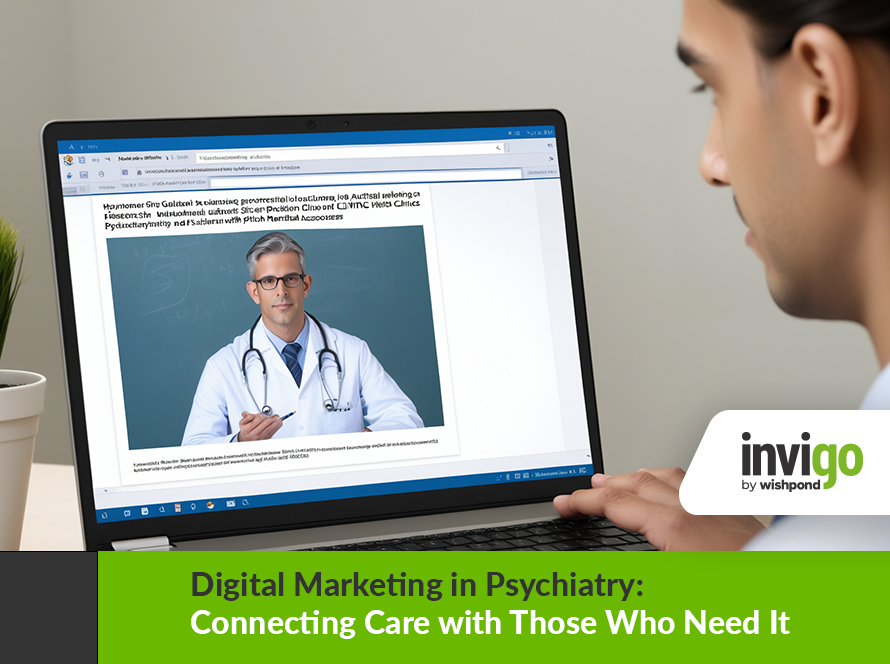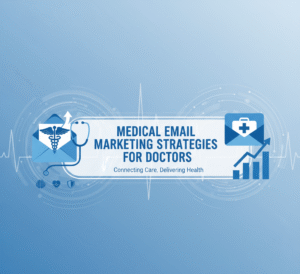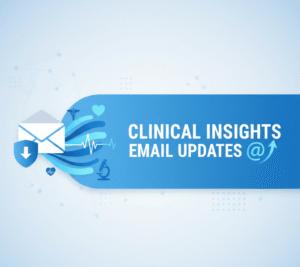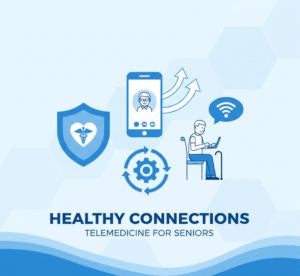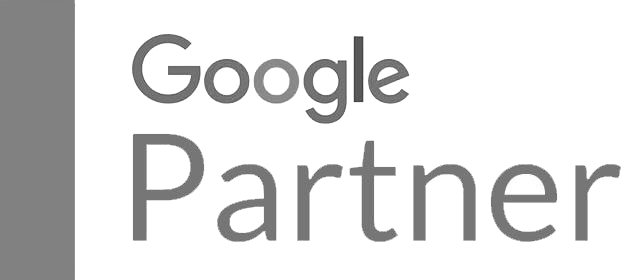“Learn how digital marketing in psychiatry uses blogs, video, and social media to raise awareness, build trust, and destigmatize mental health treatment for practitioners.”
The landscape of mental health support is changing. For too long, conversations around conditions like anxiety, depression, and ADHD remained in the shadows. But now, digital media offers a powerful beacon, illuminating paths to understanding and healing. Psychiatrists and mental health professionals are no longer confined to the four walls of their clinics. They can reach millions, directly address misconceptions, and build vital trust. This shift isn’t just about being “online.” It is about strategically leveraging blogs, videos, and social media to connect with those who need help most genuinely.
The Urgency of Digital Outreach in Mental Health
Mental health challenges are prevalent. Statistics consistently show a significant portion of the population struggling with various conditions. Yet, a substantial gap exists between the need for support and its actual access. Stigma plays a huge role. Many individuals fear judgment or simply do not know where to turn. This is where digital marketing in psychiatry becomes not just an option, but a necessity.
Think about it. Where do people go for information today? They go online. They search. They scroll. They watch videos. This behavior presents an unprecedented opportunity for mental health professionals to be present where their potential patients already are. Instead of waiting for individuals to seek them out, practitioners can proactively offer valuable, accurate, and compassionate information.
Beyond the Waiting Room: Why Digital is Essential for Psychiatrists
While foundational, the traditional model of mental health care often struggles with scalability and reach. Digital media addresses these limitations head-on.
Breaking Down Barriers
Digital platforms dismantle geographical barriers. Someone living in a rural area with limited local resources can access expert advice fnationwide They can find information, understand symptoms, and even connect with professionals remotely, which significantly broadens the scope of care.
Fighting Stigma Head-On
Anonymity matters. Many people feel more comfortable initially exploring mental health topics from the privacy of their own homes. Digital content provides a safe space for this initial exploration. By consistently publishing well-researched, empathetic content, mental health professionals can normalize conversations around mental illness. They can show that seeking help is a sign of strength, not weakness.
Building Authority and Trust
In a world saturated with information, credibility is paramount. Digital content allows psychiatrists to showcase their expertise. They can simply share their knowledge, explain complex concepts, and offer insights that establish them as trusted authorities. This builds a strong foundation of confidence with potential patients long before they ever schedule an appointment.
The Pillars of Digital Strategy for Mental Health Professionals
So, how do psychiatrists and mental health clinics effectively navigate this digital landscape? It involves a multi-pronged approach, utilizing various content formats and distribution channels.
1. The Power of the Written Word: Blogs and Articles
Blogs are more than just online journals. They are powerful educational tools. For mental health professionals, a blog is a central hub for valuable information.
What to Write About:
- Explaining Conditions: Detailed yet accessible articles on conditions like depression, anxiety, bipolar disorder, PTSD, and ADHD. Break down symptoms, causes, and treatment options. For example, a post titled “Understanding ADHD in Adults: More Than Just Fidgeting” can demystify the condition.
- Treatment Modalities: Demystify Cognitive Behavioral Therapy (CBT), Dialectical Behavior Therapy (DBT), psychodynamic therapy, and medication management. Explain how each works and who might benefit. A piece on “What to Expect from Your First CBT Session” can ease anxieties.
- Coping Strategies: Offer practical advice for managing stress, improving sleep, building resilience, and fostering positive relationships. These articles provide immediate value. Think: “Five Simple Breathing Exercises for Instant Anxiety Relief.”
- Addressing Stigma: Directly confront common myths and misconceptions about mental illness. Share stories (with permission and anonymity) that highlight recovery and growth.
- Clinic News and Updates: Share information about new services, practitioners joining the team, or community involvement.
Optimizing Your Blog:
- Keyword Integration: Naturally weave in keywords like “mental health awareness campaigns,” “anxiety management content marketing,” and “behavioral health outreach.” This helps search engines find your content.
- Readability: Use clear, concise language. Break up text with subheadings, bullet points, and short paragraphs. Avoid jargon.
- Call to Action: Include a clear call to action (CTA) at the end of each post. This could be to schedule a consultation, sign up for a newsletter, or download a resource.
- Shareability: Make it easy for readers to share your articles on social media.
2. The Visual Impact: Video Content
Video is incredibly engaging. It allows for a more personal connection than text alone. For mental health professionals, video offers a unique opportunity to convey empathy and professionalism.
Types of Video Content:
- Explainer Videos: Short, animated, or live-action videos explaining complex mental health concepts. Imagine a two-minute video defining generalized anxiety disorder.
- “Meet the Team” Videos: Introduce your psychiatrists and therapists. Let viewers see their personalities. This humanizes the clinic and helps build rapport.
- Q&A Sessions: Answer frequently asked questions from patients or common queries related to mental health. This directly addresses audience concerns.
- Therapy Insights (General): Discuss general principles of therapy, the therapeutic process, or common misconceptions about seeking help. Do not offer specific medical advice. For example, a video titled “What Happens in a Therapy Session?” can demystify the process.
- Short Tips and Exercises: Offer quick, actionable tips for stress reduction or mindfulness. These are highly shareable.
- Patient Testimonials (with consent): Positive patient experiences can be very powerful if appropriate and with full, informed consent and careful consideration of privacy.
- Webinars and Online Mental Health Workshops: Host live or pre-recorded sessions on specific topics. These can be interactive and provide deeper learning. This aligns perfectly with “online mental health workshops.”
Best Practices for Video:
- Quality Matters: Good lighting, clear audio, and a stable camera are essential. You do not need a professional studio; a well-lit room and a good microphone will suffice.
- Keep it Concise: Attention spans are short. Most explainer videos should be under five minutes.
- Strong Opening Hook: Grab viewers’ attention in the first few seconds.
- Call to Action: Encourage viewers to visit your website, subscribe to your channel, or book a consultation.
- Distribute Widely: Upload videos to YouTube, embed them on your website, and share them across all your social media platforms.
3. The Conversational Power: Social Media
Social media is where conversations happen. It is where communities form. For mental health professionals, it is a crucial channel for outreach and engagement. This is where “social media therapy outreach” truly comes to life.
Choosing the Right Platforms:
- Facebook: Facebook is still a dominant platform for community building and sharing longer-form content. Suitable for educational posts, event promotion, and community group engagement.
- Instagram: Highly visual. Ideal for sharing mental wellness infographics, short video clips, inspirational quotes, and behind-the-scenes glimpses of your clinic (maintaining patient privacy, of course). Use Instagram Stories and Reels for dynamic content.
- X (formerly Twitter): Excellent for sharing quick tips, linking to blog posts, participating in relevant conversations, and sharing news. Use relevant hashtags.
- LinkedIn: Professional networking. Share insights on mental health in the workplace, clinic achievements, and professional development. Target businesses and HR professionals.
- TikTok is becoming increasingly popular, especially with younger demographics. It features short, engaging videos. Consider simple, positive messages or brief educational snippets. This is an excellent platform for “ADHD digital campaigns” with short, relatable content.
Social Media Content Strategies:
- Educational Posts: Share snippets from your blog, as well as quick facts or definitions of mental health terms.
- Infographics: Highly shareable visual summaries of complex information. “Mental wellness infographics” are particularly effective.
- Polls and Questions: Encourage engagement by asking your audience about mental health.
- Live Q&A Sessions: Host live streams where you answer questions from your audience in real-time.
- Behind-the-Scenes: Show the human side of your practice (e.g., team lunches, office plants) while always respecting patient confidentiality.
- Reshare Relevant News: Share reputable articles or research findings on mental health.
- Mindful Engagement: Respond to comments and messages professionally and empathetically. Provide general information, but always direct individuals seeking specific medical advice to consult a professional.
Crucial Considerations for Social Media:
- Confidentiality is King: Never discuss specific patient cases or breach confidentiality. Be extremely careful about what you post.
- Avoid Giving Individual Advice: Your social media presence is for general education and awareness, not individual diagnosis or treatment. Always include disclaimers.
- Crisis Management: Plan how to respond if someone posts a cry for help. Direct them to crisis hotlines or emergency services.
- Consistency: Post regularly to maintain an active presence.
The Strategic Advantage: Targeted Advertising
Organic reach is valuable. However, targeted advertising allows you to reach specific demographics most likely to need your services. This is where “teletherapy promotion” and specific campaign targeting become highly effective.
How Targeted Ads Work:
- Demographic Targeting: Reach people based on age, gender, location, interests, and income levels. For instance, an “ADHD digital campaign” could target parents of school-aged children or young adults.
- Interest-Based Targeting: Show ads to people interested in mental health topics, self-help, or related conditions.
- Lookalike Audiences: Create audiences that resemble your existing patient base.
- Retargeting: Show ads to people who have previously visited your website or interacted with your content. This keeps your clinic top-of-mind.
Ad Content and Messaging:
- Clear and Concise: Your ad copy should be brief, impactful, and immediately convey your message.
- Problem/Solution Focus: Highlight a common mental health challenge and present your clinic as the solution.
- Strong Visuals: Use compelling images or short videos.
- Compelling Call to Action: “Learn More,” “Book a Free Consultation,” “Download Our Guide.”
- Empathy and Understanding: The tone should be supportive and non-judgmental.
Targeted advertising amplifies your message. It ensures that your valuable educational content and service offerings reach the people actively searching for solutions or who might benefit from better understanding their symptoms.
Measuring Success and Adapting Your Strategy
Digital marketing is not a one-and-done effort. It requires continuous monitoring and adaptation.
Key Metrics to Track:
- Website Traffic: How many visitors visit your blog and service pages? Where are they coming from?
- Engagement Rates: On social media, how many likes, shares, comments, and saves are your posts receiving? For videos, track watch time and completion rates.
- Conversion Rates: How many website visitors fill out contact forms, make calls, or schedule appointments?
- Reach and Impressions: How many people are seeing your content?
- Search Engine Rankings: Where do your blog posts appear for relevant keywords?
Analyzing these metrics, you can understand what is working and what needs improvement. Certain types of video content resonate more. Your blog posts require a stronger call to action. This data-driven approach allows continuous refinement of your “digital counseling education” efforts.
Invigo Media: Your Partner in Digital Mental Health Outreach
Navigating the complexities of digital marketing while maintaining a demanding clinical practice can be overwhelming. This is where specialized expertise becomes invaluable. Invigo Media understands the unique sensitivities and requirements of the mental health sector.
We do not just build websites or run ads. We develop comprehensive digital strategiesexplicitly tailoredy for psychiatrists and mental health clinics. Our approach focuses on:
- Content Creation that Connects: Crafting empathetic, accurate, and engaging blog posts, video scripts, and social media content that truly resonates with individuals seeking help. We understand the nuances of communicating about mental health responsibly.
- Strategic Social Media Management: Building an active, supportive online community around your practice. We manage your presence across platforms, ensuring consistent messaging and responsive engagement.
- Targeted Advertising Campaigns: Designing and executing precise ad campaigns that reach the right people at the right time, maximizing your outreach and patient acquisition efforts. This includes sophisticated “teletherapy promotion” strategies to expand your reach.
- SEO Optimization: Ensuring your valuable content is easily discoverable by search engines, positioning you as a leading authority in your field.
- Reputation Management: Helping you maintain a positive image and effectively manage online reviews.
Invigo Media bridges the gap between clinical excellence and digital reach. We allow psychiatrists to focus on what they do best – providing exceptional care – while we ensure their vital message reaches a broader audience. Our expertise in “digital marketing in psychiatry” is not just about technology; it is about impact, trust, and ultimately, helping more people find the support they need.
The Future is Digital: Embracing Innovation in Mental Health Care
The digital transformation in mental health is not a passing trend. It is the future. As technology continues to evolve, so will the opportunities for educating the public, destigmatizing conditions, and connecting individuals with life-changing support.
Mental health professionals have a profound responsibility and an incredible opportunity. By embracing digital media, they can extend their impact beyond the traditional consulting room. They can become powerful voices for change, offering hope and guidance to millions.
This proactive approach to “behavioral health outreach” is about more than just marketing. It is about public health. It is about fostering a society where mental health is understood and discussed openly and where help is readily accessible to all. The digital realm is not merely a tool but a canvas upon which we can paint a more informed, compassionate, and supportive future for mental well-being.
FAQs about Digital Marketing in Psychiatry
Q1: Is it ethical for psychiatrists to use social media?
Absolutely, but with strict ethical considerations. Social media for psychiatrists should focus on general education, awareness, and community building, not on providing individual medical advice or engaging in therapeutic relationships. Maintaining patient confidentiality is paramount. Disclaimers stating that the content is for informational purposes only not a substitute for professional medical advice are crucial.
Q2: What kind of content resonates most with potential mental health patients online?
Content that is empathetic, informative, and provides practical value resonates most. This includes clear explanations of conditions, common coping strategies, insights into what therapy involves, and messages that destigmatize seeking help. Videos that humanize the practitioners and infographics that simplify complex information are also highly effective.
Q3: How can digital marketing help destigmatize mental health treatment?
Digital marketing allows for widespread, consistent dissemination of accurate information. By openly discussing mental health conditions, sharing stories of recovery (with permission and anonymity), and showcasing that mental health challenges are common and treatable, digital content normalizes these conversations. It helps people see that seeking help is a sign of strength and self-care, not weakness.
Q4: How do psychiatrists ensure patient confidentiality when using digital platforms?
Confidentiality is the cornerstone of mental health care. This means never discussing specific patient cases on digital platforms, even anonymously. Mental health professionals should avoid engaging in direct therapeutic conversations in public forums. Secure, encrypted platforms should be used for teletherapy sessions, and any shared content should be general and educational, not specific to any individual.
Q5: What is the most critical first step for a mental health clinic looking to start digital marketing?
The most icriticalfirst step is to develop a clear strategy. This involves identifying your target audience, defining your goals (e.g., raise awareness, increase patient inquiries), and determining which platforms and content types best suit your objectives and resources. Partnering with a specialized agency like Invigo Media can help streamline this process and ensure a robust, ethical foundation.
Q6: Can teletherapy be effectively promoted through digital marketing?
Yes, teletherapy promotion is a highly effective use of digital marketing. Targeted advertising can reach individuals in specific geographical areas or those who prefer the convenience of remote sessions. Content explaining the benefits of teletherapy, how it works, and technology requirements can be shared through blogs, videos, and social media. This directly aligns with the keyword “teletherapy promotion.”
Q7: How important is SEO (Search Engine Optimization) for mental health websites?
SEO is critically important. When individuals search for “anxiety treatment near me” or “therapist for depression,” you want your clinic to appear high in the search results. Effective SEO, including using relevant keywords and creating high-quality, informative content, ensures your practice is discoverable by those actively seeking help.
Q8: What are the common pitfalls to avoid in digital marketing for psychiatry?
Common pitfalls include breaching confidentiality (even inadvertently), providing individual medical advice in public forums, using overly clinical jargon that alienates the audience, being inconsistent with posting, and neglecting to respond to comments or inquiries. It is also crucial to avoid making unsubstantiated claims or promising “cures.” Focus on education, support, and professional guidance.
Q9: How can “mental wellness infographics” be used effectively?
Mental wellness infographics are highly effective because they distill complex information into easily digestible, visually appealing formats. They can be shared across social media platforms, embedded in blog posts, and printed for waiting rooms. They are excellent for explaining symptoms, offering quick tips for self-care, illustrating statistics, or demystifying mental health conditions in a digestible way. This directly addresses the keyword “mental wellness infographics.”
Q10: How does digital marketing help build trust with potential patients before they even contact the clinic?
Digital content allows potential patients to get to know your expertise, approach, and clinic’s values before committing. You establish yourself as a credible and compassionate resource by consistently providing valuable, empathetic, and accurate information. This transparency and helpfulness build a foundational layer of trust, making individuals more comfortable taking the next step and reaching out for a consultation.

